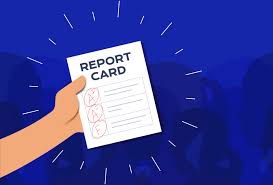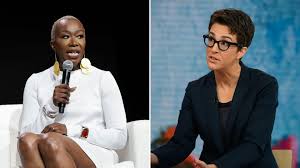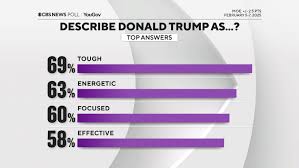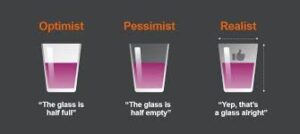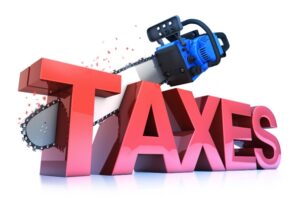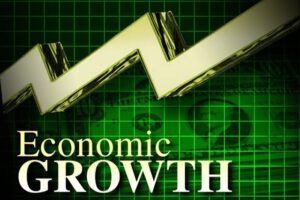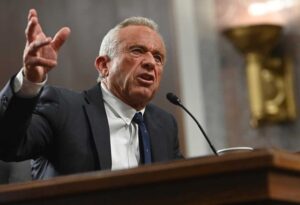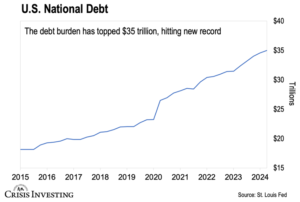Why Trump Won and What It Means for Everyone

The Eve of Destruction
The day before the election, a family member asked me if I was ready for a “landslide.” He was confident Harris would win by historic proportions because “No woman or person of color is going to vote for Trump.”
I just smiled because I wasn’t sure – and I didn’t want to set myself up for an “I told you so!” from him. What I believed was that the election would be very close. And I think I felt that way because I’d been reading predictions from both conservative and liberal media, and they were all reasonably convincing.
As the exit poll counts began shifting towards Trump later the following evening and it looked like he might achieve the unthinkable and win every swing state, I was tempted to send my relative an “I told you so!” text. But I didn’t.
Well… the truth is I did. But as soon as I hit the “send” button, I felt bad about it. It wasn’t fair to gloat.
In fact, my Never Trump friends and family members were so devastated by Trump’s win that I was told several times, in no uncertain terms, that I should not speak to them until they could “process” it.
How Close Was It?
If you get your views from the NYT and CNN, you probably think Trump won the election by a narrow margin. The fact that he won the popular vote by only 1.5% could be said to support that view.
If you get your news from the NY Post or Fox News, you may believe it was a landslide. The fact that he won every one of the swing states could be said to support that view.
So let’s take a quick look at the numbers…
The Count by State

As you can see from the map above, Trump won 31 states while Harris won 19 (plus the District of Columbia).
Despite the initial enthusiasm Harris’s candidacy created with the Democratic base when she entered the race in July, she fell far short of collecting the votes expected in every state and every demographic.
The belief among her campaign team, which was uncritically reported in the legacy media, was that her age, her gender, and her race would play strongly in her favor. And that, at the very least, her numbers would be better than Biden’s were in 2020.
It didn’t happen. In Arizona, she received about 90,000 fewer votes than Biden had. She received about 67,000 fewer in Michigan and 39,000 fewer in Pennsylvania. In four other states – Georgia, Nevada, North Carolina, and Wisconsin – Harris won more votes than Biden. But Trump’s support grew by more. In some states, significantly more.
Harris’s strongest results came in Georgia, where she received almost 73,000 more votes than Biden did when he very narrowly carried the state. But Trump did better than that, adding 200,000 to his 2020 total, and winning Georgia by roughly two percentage points.
The Electoral College Vote
Trump swept the seven most competitive states to win a convincing electoral college victory, becoming the first Republican nominee in 20 years to win a majority of the popular vote.
The Count by Cities, Counties & Rural Areas
Of the 27 cities with populations of more than half a million, Harris won 12 (Boston, New York, Washington DC, Richmond, Chicago, Minneapolis, Denver, Albuquerque, Los Angeles, San Francisco, Portland, and Seattle). Trump won the other 15.
Though Trump improved across the map, his gains were particularly strong in the urban counties of Detroit, Milwaukee, and Philadelphia, and in the industrial swing states Michigan, Wisconsin, and Pennsylvania.
Finally, Trump did better with rural Americans than he had in 2020, from the Southwest to the Acela Corridor. And in doing so, he bulldozed the once invincible Blue Wall.
The Count by Gender
One of the biggest surprises of the election was the women’s vote.
Biden won 55% of the women’s vote in 2020 and it was expected that Harris would do much better than that. In fact, she did not even equal Biden’s numbers, winning only 53% of the women’s vote. Meanwhile, Trump won 46% of women, 3% higher than he’d garnered in 2020. Trump also increased his share of male voters, from 53% in 2020 to 55% in 2024.
The Count by Race
The other big surprise of the election was the count by race. Democrats have long enjoyed a significant advantage with racial minority voters, but this lessened considerably in 2024. Compared to 2020, Trump increased his share of Black voters by 10%.
Harris beat Trump with Hispanic voters 52% to 43%. But in 2020, Biden won 69% of the demographic. That’s a 17-point swing in Trump’s favor.
The Count by Age
The polls predicted that Harris would crush Trump with the youth vote. She won the demographic, but it was not a landslide, On the contrary, the results were mixed.
In 2020, Biden won the women-under-30 vote by 32 points, but Harris did considerably less well in 2024 by only 18 points. Meanwhile, male voters under 30, who had voted for Biden over Trump in 2020 by a margin of 15%, went for Trump by a margin of 13%. A 28-point swing.
The Count by Political Affiliation
The biggest leaps to the right weren’t taking place exclusively in Republican-leaning counties, but also in the most Democratic-leaning counties. Michigan’s Wayne County swung 9 points toward Trump, tying the more Republican-leaning Antrim County for the largest movement in the state.
The Popular Vote
The 2024 voter turnout was lower than 2020’s by 4.2 million. Nevertheless, Trump picked up about 6-7 points in the national popular vote, receiving 2.5 million more votes than he had four years before, while Harris lost about 6.9 million votes.
What’s interesting is that Blue state voters drove the shift. Six of the top seven moves to Trump occurred in hard-left states, led by California, the hardest of all. (Florida, the only exception, has gained hundreds of thousands of Blue state refugees since 2020, helping drive its shift.)
Was Trump’s Victory a Landslide?
The short answer is no.
Depending on how you do the count, there were probably two dozen presidential elections in US history that topped Trump’s win.
Just for fun, I did a little research, and the results surprised me.
In first place was the very first presidential election in 1789. George Washington won 100% of the electoral college. All 69 votes. Of course, he had a big advantage. He ran unopposed.
Next was the election of 1936, when Franklin D. Roosevelt defeated Alf Landon, a very weak candidate, by 97 percentage points. It’s commonly believed that Roosevelt’s landslide victory was due in part to the promise of the New Deal. But it was also a result of his ability to read the shifting winds of voter sentiment and his willingness to change sides to accommodate them.
The third greatest landslide may surprise you. It was the re-election of 1984, when Ronald Reagan defeated Walter Mondale with a very successful campaign dubbed “Morning in America.” It crushed Mondale’s campaign by 525 to 13 electoral votes. This landslide has been credited to Reagan’s brand of folksy conservatism that gave American voters, after suffering through the turbulent 60s and 70s, hope for a new era of political and economic stability.
Fourth place in the landslide race may be, in retrospect, another surprise if all you remember about the victor was the inglorious way he left office. It was the 1972 victory of Richard Nixon over George McGovern, winning the popular vote by an astonishing 18 million. Nixon’s huge victory was in large part due to the ratification of the 26th Amendment, which lowered the voting age from 21 to 18. Nixon had already reduced the number of troops in Vietnam and had promised to end the draft.
There were two other landslides in my lifetime: The 1964 race, when Lyndon Johnson won 486 electoral votes against Barry Goldwater’s 52. And Barrack Obama’s 2008 win over John McCain by 9 million votes.
Next to those margins, Trump’s win was hardly a landslide.
Nevertheless…
But it was a good deal better than the election of 2016, when Trump beat Hillary Clinton in the electoral college while losing the popular vote. And it was a slightly stronger electoral college win than Biden enjoyed when he beat Trump in 2020, which left the Republicans with control of the House.
I think the reason Trump’s win may feel like such a big victory to many voters on both sides is because it came as such a shock to virtually all the pollsters and pundits who had predicted Harris would win by a significant margin.
That said, the significance of Trump’s victory should not be discounted. He won all seven of the swing states, and the popular vote to boot. Furthermore, he moves into the White House in January with a Republican majority in both the House and the Senate. Which means he has just about all he needs in terms of political power and popular support to get his promised agenda done.
And there is one more thing: The fact that Trump beat Harris, the first Black and female presidential candidate, with both women and Blacks, as well as with Hispanics, Jews, and young voters, gives him a moral advantage that he will surely use to dismantle most if not all of the progressive policies and programs that were enacted during the Biden/Harris administration.
Why Did Trump Win? Let’s Count the Ways
The Economy
It’s often said that the ultimate determinant of federal elections is the state of the economy.
And that’s probably why, beginning about a year ago, the Biden administration began promoting the idea that the economy was strong and getting stronger. They had some numbers to support their case. Rising employment, for one. A rising stock market, for another. They went so far as to tout these increases as “Bidenomics.”
It was a cute idea, but it didn’t work. Throughout 2024, Biden’s “trust” ratings on the economy plummeted. The reason for that wasn’t complicated. The increase in employment was not due to an expanding GNP. It was merely the return of millions of working- and middle-class Americans that had lost or quit their jobs during COVID.
And those weren’t better jobs with higher paychecks. They were the same old jobs at the same salaries that workers were getting before the lockdown. But nearly four years later, those paychecks had much less purchasing power due the rising cost of all the most important things that middle- and working-class people spend their money on. Principally fuel and food, but also such things as building supplies, cars (new and used), and home, health, and life insurance.
Most working Americans never bought the “miracle” of Bidenomics. But the progressive politicians and media that were promoting the ruse didn’t notice that because during
that same period, from 2021 to 2024, they saw their stock rise by 50%.
In retrospect, it’s easy to see what a mistake it was to push the Bidenomics lie. Affluent voters knew that Biden had nothing to do with the fattening of their 401(k)s. And the rest of the voters were feeling the pain of stagflation.
Immigration
Immigration was the second most important issue that affected the outcome of the election, according to most pollsters. And for good reason.
The Biden administration’s open-border policies resulted in something like 11 million immigrants entering the country during his term. Most were not vetted. Instead, they were given notices for court dates when they were expected to appear sometime in the future.
Notwithstanding the miniscule incursions sent by border states northward to upscale Blue communities like Martha’s Vineyard, the impact of this massive influx of largely uneducated, non-English-speaking foreigners had a direct and damaging impact on the lower-income communities around the country where the Biden administration had been sending them in military planes under the cover of night.
Looking back at it now, one might wonder why the Biden administration would have thought that letting so many millions of undocumented immigrants into the US would help them win the 2024 election. I don’t think that was ever their intention. It’s obvious to me that the play was to get by in 2024 and then lock themselves into successful reelections thereafter with a widely expanded base of Hispanic voters, which have traditionally supported Democrats.
But they didn’t quite get away with it. Instead, Biden’s open-border policy pushed a significant number of Black and Hispanic voters (mostly men) to Trump. The demographic remained predominantly Democrat. But there was enough of a shift to make a difference in key voting districts.
However, in my view, those two issues – the economy and immigration – which were touted by Republican analysts to be the critical issues in giving Trump a marginal win, were not what made the difference.
As I see it, more important were the “softer” issues to which the Biden team paid scant attention.
Social Media and the Woke Movement
For the last 25 years, the way the world generates and consumes information has changed profoundly.
In 1999, for example, people in literate cultures received basically all their news from two media sources: television and newspapers. And each of those sources had fewer than six news channels, for a combined total of about a dozen. But those channels were not all doing primary research and reporting. Most relied heavily on international agencies. (UPI and AP were the largest.)
Which meant there was a limit to the amount of news that was being collected around the world and, therefore, to the diversity of events that could be reported on and facts that could be discovered.
To be sure, there were news channels that were thought to be left- or right-leaning and a few that were in between. But because they were all drawing from the same few wells, the range of opinions about the news was limited, too.
Another way of putting that is that in 1999 both conservative and media outlets were largely agreed on a great number of basic facts. Those facts were seen as indisputable and thus uncontroversial. Which meant that differences of opinion could, with good faith and logic, be discussed reasonably so that common agreement was possible.
This is what made the great 1965 debates between William F. Buckley and James Baldwin so civilized by today’s standards. And it is what allowed such debates to be watched by millions of Americans across the political divide.
Today, we have a very different media landscape. Thousands of independent outlets dispense news gathered from thousands of different sources and provide the potential for millions of different perspectives on a virtually unlimited number of facts.
I remember reading an essay about this about 20 years ago. The writer predicted that one of two things would happen: Either the production of information would fractionalize into hundreds of options feeding hundreds of different individual consumer profiles, which he saw as a “democratizing” event. Or a small handful of media outlets would oversee the production and dissemination of most of the information to most of the world.
As it happened, both predictions were right.
We now have countless primary news sources feeding into countless broadcasting channels. But because of the introduction of algorithms and AI, individual users are being fed information tailored to their individual interests and biases in a manner that has steadily eaten away at a consensus of common belief. Rather than enjoying a significant wellspring of factual truth, we live in a world where truth has become determined by computer programming and belief systems have become tribal.
This change from what I would call a belief in truth and rational discourse to tribal beliefs that feel true and rational occurred gradually at first. But then, according perhaps to Moore’s Law, accelerated to the point where a perfectly intelligent person could, based on his instincts and prejudices, believe almost anything, including such ideas as White people are inherently racist, men are inherently toxic, and men can give birth.
The final stage of this transition began, I’d like to say, with the MeToo movement of 2006 – which, when it became a viral hashtag in 2017, had half of the country accepting the “fact” that in the US and other Western countries, the underlying social system was a hierarchy of brutish men and toxic male values that oppressed women in every aspect of their lives and tolerated every sort of injustice towards them, including rape.
The George Floyd incident of 2020 deepened and extended that divide. Enter the Black Lives Matter movement, ANTIFA, and academics pushing the ideologies of intersectionality, systemic racism, White privilege, and DEI (diversity, equity, and inclusion). In this view, men were the oppressors and “people of color” were the oppressed. Whites were inherently racist. White privilege was ubiquitous. Racism was universal and systemic, and the only solution to that would be a Socialist (race-based) revolution and reparations to Black Americans.
You would think that would have been the highest possible level of the intersectional, blame-and-shame movement when suddenly, almost out of nowhere, a new entry emerged. What group could be more oppressed than homosexual women of color? It turned out to be a group that most of the world hardly knew existed – people who were even more marginalized and oppressed than women, homosexuals, and people of color, but whose biological gender didn’t comply with their gender identity!
At first, the larger public didn’t quite understand. Eventually, we learned that the term “trans” referred to girls/women who saw themselves as boys/men and boys/men who saw themselves as girls/women.
In prior days, we thought of them as feminine boys/men and masculine girls/women. But now we learned that these were not quirky preferences, but states of individual identity that were as deep and permanent as color and needed to be respected as such. Not only that, but they were not in any way artificial. If a biological boy displayed girlish tendencies, it was not because of some passing fancy. It was because he was a girl. An actual girl. The fact that he had only one X chromosome and male genitalia was irrelevant. Not only that, but if you referred to him as a boy – directly or indirectly – you were guilty of harming him. Violently. And there was a term that could be applied to you. You were “transphobic.” Which was as bad as or worse than being sexist, homophobic, or racist.
During Trump’s first run for office, it was hardly even a topic of discussion. But by 2023, a transwoman had been honored as “Woman of the Year” by a British magazine and another transwoman was Biden’s guest of honor at a celebration of international womanhood at the White House.
This was nuts. But Woke ideology had progressed so far by that time that laws were being enacted to allow biological males to use the bathrooms previously reserved for biological females and compete against them in sports. Worse were the laws passed that allowed such troubled children to be “treated” for their “dysphoria” through “gender affirming care” (i.e., chemical castration and bodily mutilation). In some cases, without parental knowledge or consent.
The Rise of the Silent Dissenters
I believe it was this extreme development of the “trans” movement that ultimately led to Trump’s victory and the defeat of the Democrats in both houses of Congress.
It was one thing to acknowledge that children with “gender dysphoria” should be treated with kindness and respect. It was an entirely different matter to claim that we should abandon reality in how we thought about and treated them.
But by 2022, progressives had taken identity politics to such an extreme that it was impossible to say the obvious truth about this lunatic set of cultish beliefs without being shamed and ridiculed and, in some parts of the world, face legal action.
What happened then was a massive chilling of common sense. Voicing disapproval or even doubts about these unwritten transgender commandments meant condemnation and/or ostracization from one’s otherwise likeminded community. So, tens of millions of liberal and leftist American voters had to go quiet on the issue.
But in the privacy of their personal thoughts, they knew the progressive movement had gone too far.
There were few if any surveys to indicate how large the group of silent dissenters had grown. But there were plenty of indications in the declining viewership of the progressive media and the declining revenues of many of America’s largest companies that associated themselves with the trend.
From 2020 to 2024, all the major TV networks, as well as the largest liberal newspapers, saw their audiences decline precipitously. In some cases, by as much as 50%. Revenues from Disney-produced Woke movies plummeted, as did sales of Bud Light and Target when they put their chips on Woke advertising campaigns.
Some of the decline came from conservative consumers who were being exposed to the craziness daily by conservative media. But I believe there was also a very sizeable loss from moderate and even liberal consumers who quietly decided they couldn’t take it anymore. They weren’t rushing to Fox News or the New York Post necessarily, but they could no longer watch MSNBC and The Washington Post.
This disaffection from the extremities of the progressive movement happened not only with the news and entertainment, but in all sorts of other industries. In 2024, there were dozens of large businesses that turned their backs on their DEI efforts and returned to hiring and firing people based on merit.
But virtually none of this disaffection was being reported in the legacy press.
Depending on the poll you looked at, Harris was either going to win in a landslide or by a modest margin in the electoral college. But she was certainly going to maintain the popular vote.
My point is: The pollsters were so terribly wrong this time not because they were misreporting the facts, but because a whole lot of the centrist and even liberal voters weren’t being honest with their answers. They didn’t want anyone to know that they were going to vote for Trump.
What Trump’s Election May Have Put an End To
As I said above, I don’t believe Trump’s victory was a landslide. Trump won a solid majority of the electoral votes, both houses of Congress, and a majority of the popular vote. But he will face resistance in trying to implement many of his promises. Not just from the Democrats in Congress, but also from a portion of the Republican politicians that have no desire to really drain the swamp.
What he can accomplish now that he understands Washington’s entrenched bureaucracy and has appointed outsiders to dismantle it has yet to be seen. But I do think that his victory may put an end to some of the worst excesses of the progressive movement.
For example…
Forbidden and Compelled Speech
A nation doesn’t need a constitutional amendment to protect speech that the government approves of. The founders of our country understood that. They also understood that forbidden speech was, more than anything else (including political ideology), the primary and most powerful way that government can usurp democracy. That’s why they made freedom of speech the First Amendment.
The Biden administration seemed to have forgotten about that when it bent a knee to forbidden speech by entertaining the concept that certain kinds of speech were not protected by the First Amendment.
As Biden-Harris Climate Czar John Kerry said at a World Economic Forum conclave prior to the election: “If people only go to one source, and the source they go to is sick… our First Amendment stands as a major block to be able to just, you know, hammer it out of existence.”
If that wasn’t scary enough, Biden and Harris went so far as to conspire to establish a government office to monitor and prosecute speech that might be determined to be hateful. The next step, something the Biden administration also entertained, was to establish laws and regulations to compel “correct” speech – like Canada did by passing its gender identity rights Bill C-16.
The percentage of Americans that believed this made sense was probably equal to the percentage of Americans who suffered from gender dysphoria. Almost none. But by embracing the craziness, Biden and Harris (who proudly announced her pronouns on several occasions) signaled to moderate, undecided voters that they – and the progressive wing of their party – had abandoned common sense. If they were willing to pretend that biological males could transform themselves into “real” females simply by identifying as female, what other insane political ideas would they embrace?
With Harris’s defeat, the madness of criminalizing hate speech and/or compelling “correct” speech has, at least for the foreseeable future, fallen into the cesspools of Woke thinking. I don’t think it will come back in my lifetime.
DEI and Virtue Signaling
If you spent any time over the last four years watching Congressional hearings of Biden appointees, you witnessed the fruits of the “diversity, equity, and inclusion” ideology. One crazy person after another was nominated for important positions, most with no other qualification than fitting into and supporting some favored category of DEI. Harris herself, by Biden’s own testimony, was selected for her race and gender. (Imagine how much better the Democrats would have done in 2024 if Tulsi Gabbard, who demolished Harris in the elections, had been Biden’s nominee.)
DEI was dumb. But it was accompanied by an equally dumb idea: that espousing DEI was morally virtuous – and that denouncing DEI was racist, sexist, homophobic, etc.
As John Leake, a politically moderate Substack commentator recently wrote:
Memo from the American People to Democrats: We don’t believe your virtue-signaling is an expression of true moral integrity, so stop virtue-signaling and try to learn something from your humiliating defeat. Analyze your mistakes and try a fresh approach at the next election.
I don’t think we have to worry about this bad idea resurfacing during Trump’s term or for the foreseeable future. DEI was a hot topic among Fortune 500 companies and leading educational institutions in the last four years. But almost all of the companies and even many of the institutions are abandoning those policies after suffering the embarrassment of showing the world how well they work.
Lawfare
Towards the end of the summer, as the election drew near, never-Trump celebrities and media personalities began talking about their fears that Trump would initiate a campaign of vengeance against his political opponents and even attempt to throw them all in jail. They made these statements with straight faces, oblivious to the fact that Trump had just endured two years of progressive-led lawfare against him. All of which was covered happily by the legacy media, and all of which was obviously political. The strategy failed completely. It couldn’t increase the base of Trump haters. They were already committed.
But it could, and I believe it did, make Trump a sympathetic character in the drama for enough undecided voters to help bring him the victory on Nov. 4.
On Jan. 20, Trump and the Republicans will be in the catbird seat to do exactly what his opponents are worried about him doing. It will be interesting to see if that happens.
Race & Gender Baiting as a Political Tactic
I cannot think of a political personality in my lifetime that has been called a racist more times than Donald Trump. Or a misogynist, for that matter. Pick any version of these two pejoratives and ask Google how many times it’s been applied to public personalities. Trump will be at the top of every list.
It’s said that if you make a claim, true or false, seven times in a row people will begin to believe it. This did not happen with the vilification of Trump. Like the lawfare strategy, the effort to turn voters away from Trump by slandering him backfired. It may have sated to some extent the hate felt by those who did the name calling. But it had no chance of pitting undecided voters against him.
And that wasn’t the big mistake. The tactic that sealed the deal was the same one that give Trump the victory in 2016, when Hillary Clinton called Trump supporters “deplorables.” Watching the most visible Trump haters proclaim that anyone who would even think about voting for him is racist, sexist, transphobic, galvanized a significant percentage of undecided voters.
In retrospect, that so many prominent Harris supporters would employ this vicious and impulsive ad hominem name calling as a rhetorical strategy can best be explained as a symptom of the less virulent term of ridicule used by the opposition: Trump Derangement Syndrome!
Since the election, some outspoken progressives who called Trump racist and sexist during the campaign have admitted that the name calling was ineffective and questioned the wisdom of having done it. But others have doubled down by expanding the target of their slander to anyone and everyone who voted for Trump – i.e., the majority of the electorate! It seems clear to me that if the Democrats want to win back the White House and Congress, they will have to abandon this foolish exercise in self-indulgence.
Trust in the Legacy Media
One of the most salient facts about Trump’s win was that he won convincingly without any support from the legacy media, including the NYT, The Washington Post, CNN, NBC, MSNBC, and NPR.
This was not a surprise. In the eight years that elapsed since he won the presidency in 2016, most of the major media outlets saw their audiences gradually get smaller.
And since the 2024 election, those numbers fell off a cliff. MSNBC, for example, lost roughly half its viewership, from an average of 1.34 million prior to Nov. 4 to an average of only 660,000. CNN lost about 40% of its prime-time viewership since Nov. 5, from an average of 739,000 to 448,000. Ratings for the broadcast and cable news channels saw a decline of 15 million since 2020, from an average of 57 million to 42 million.
A similar pattern has taken place in the newspaper industry, with daily nationwide circulations falling from more than 30 million in 2019 to less than 20 million. If the trend continues, one-third of newspapers will be lost by 2025, according to a 2022 study published by Northwestern University.
Fox News, on the other hand, has seen its prime-time viewership increase by about 25% since Election Day, from 2.4 million to nearly 3 million.
As for the why of this trend, some of it can surely be attributed to the rise of independent social media news outlets, and particularly conservative ones. But it’s also impossible to deny that an equally big part is attributable to a decline in the public’s trust of mainstream media. Recent polls indicate that only about one in three Americans have confidence in the media to report the news “fully, accurately, and fairly.”
It will be interesting to see whether the legacy media will try to recapture its audience by more balanced reporting or double down on their positions, as some liberal think tanks have advised.
And to be fair, the huge gap that currently exists between the legacy and the conservative media will probably narrow after Trump takes office in January. Some percentage of those that left CNN and MSNBC will almost certainly come back for news and views that are critical of Trump. But I don’t think there is any chance that the recovery will be much more than half of what was lost.
Recommended Reading
Different perspectives on lying from The Free Press…
* Matti Friedman: “When We Started to Lie”
* Peter Savodnick: “The Big Scramble”
* Bari Weiss: “The Era of the Noble Lie”



